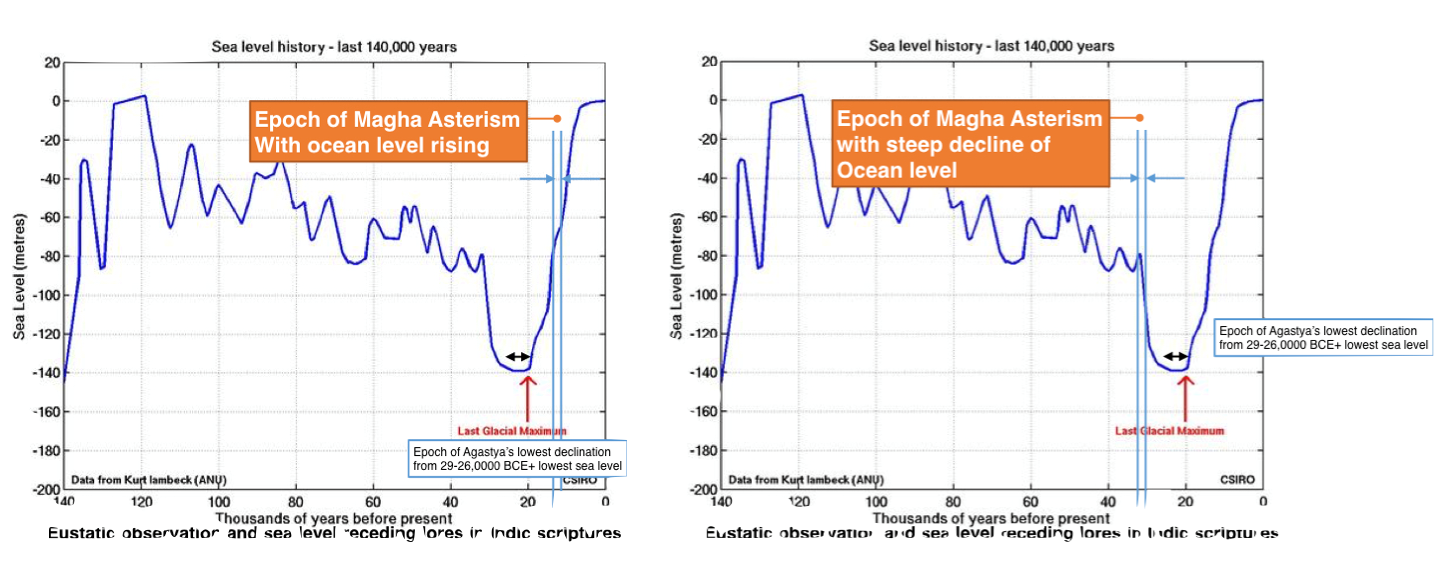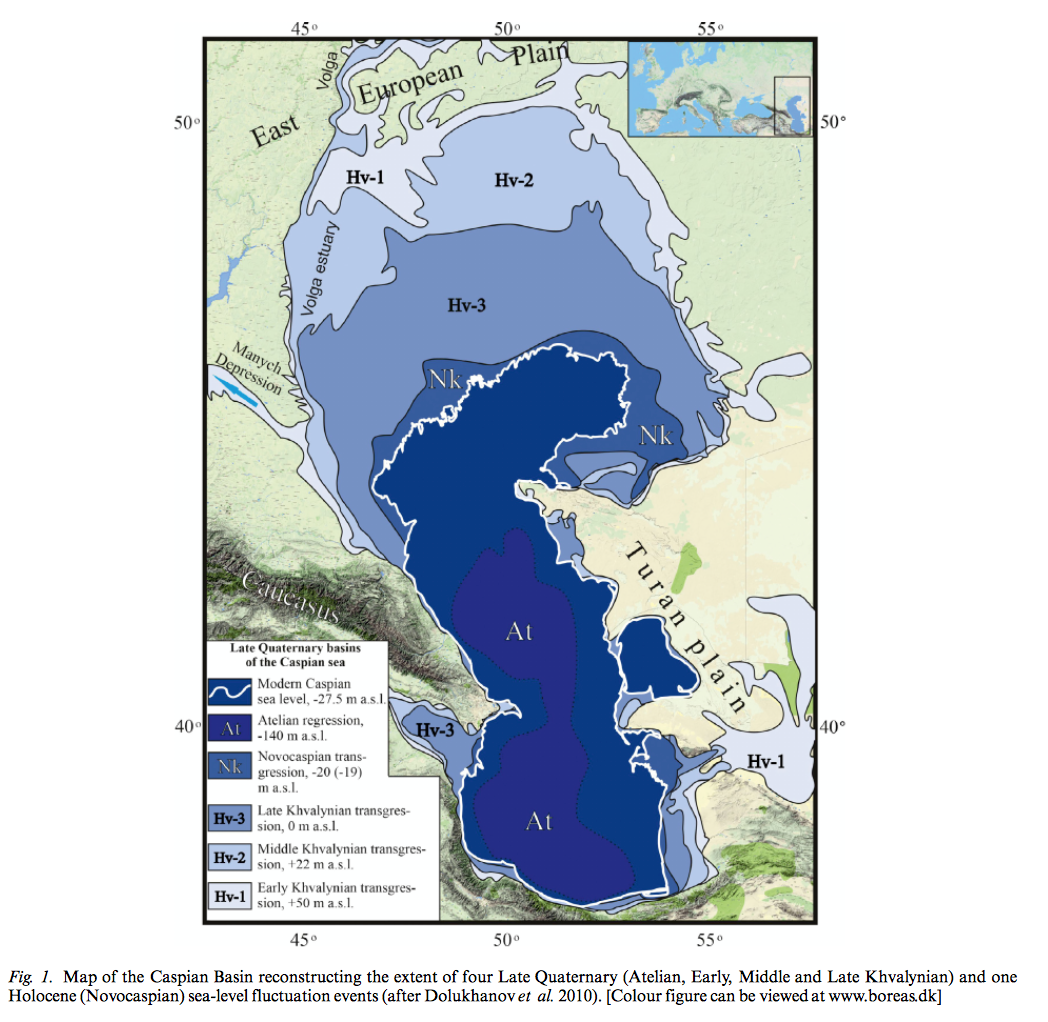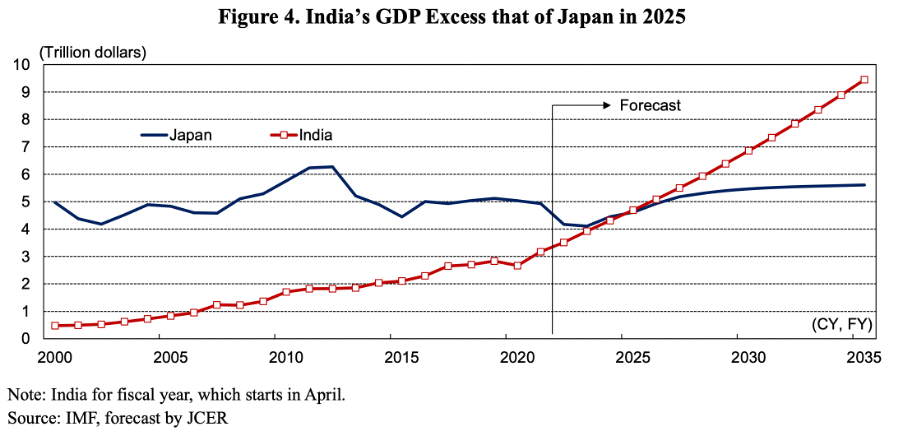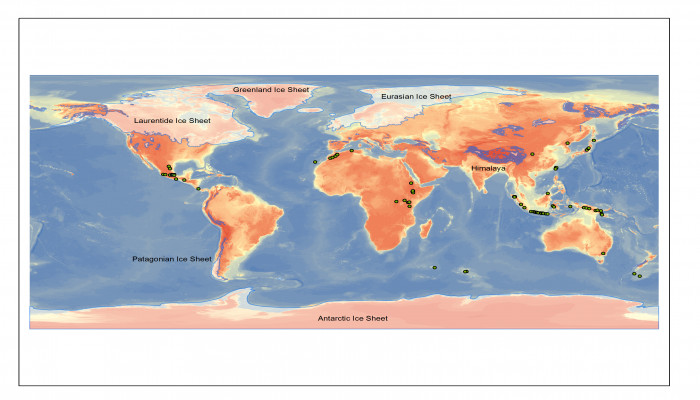Bṛhadratha’s Observation of Decline of Ocean level— Epoch 34,500 BCE
- In History & Culture
- 12:06 PM, Dec 28, 2022
- Rupa Bhaty
Introduction
There are many texts which carry astronomy as a core content, and contain different epochs in which those phrases were recorded, subtly. On one hand, few texts also have records of geo-hazards like the rise of the ocean a.k.a flood myths which is a universal memory. On the other hand, the drying of ocean and rivers are rare, they are the memories of times prior to the Last Glacial Maximum and are explicitly present in Indic texts and memories, with astronomy observations entwined within.
One such we have Agastya drinking ocean myth which perfectly goes well with LGM[1] times, a geo-hazard noticed and entwined with the astronomy of the southern hemispheric stars seen till north of Kurukshetra, very similar to our times where Agastya helically rises in Kurukshetra. This happens due to the Axial precession/precession of equinoxes due to which certain stars which were only seen in the south of Vindhya for 13000 years were seen in the north of Vindhya for other 13000 years slowly reaching till Kurukshetra and beyond as per their Right ascension and declination. This would mean that Agastya - the star Canopus has left its place as a southern pole star and is now visible in the north. The question thus arises, whether we have any other such unique observation where the Ocean levels have declined in Indian memoirs.
We explicitly find one such memory in Maitrayāṇī Arṇyaka Upaniṣad where the effect of axial precession was noted saying, “Why Dhruva drifts, why the air strings holding the celestial bodies dip (kim.....dhruvasya pracalanam...vâtarajjûnâm nimajjanam)’. Implicit in this enquiry is the statement: ‘the North Star understood by us as fixed has changed its position’ (noted by RN Iyengar).
The Maitrayāṇī Arṇyaka Upaniṣad, of which much is lost, a small part constitutes a dialogue between king Bṛhadratha and Śakāyana. The dialogue starts with vairāgya, i.e., remorseful-ness but also encompasses Kālabodha, i.e., knowledge of time and other knowledge in entirely, including subtle and gross, pervading and changing philosophies. There is thus a section of astronomy embedded with all changing sky, geo-hazard, and genealogy that are explicitly noted. Let’s take a look at them.
Description 1, 2 & 3
1. MAU 6.33 specifies spring as the first season of the year.
पञ्चेष्टको वा एषोऽग्निः संवत्सरः तस्येमा इष्टका यो वसन्तो ग्रीष्मो वर्षाः शरद्धेमन्तः स शिरःपक्षसीपृच्च्हपृष्टवान् एषोऽग्निः पुरुषविदः सेयं प्रजापतेः प्रथमा चितिः….॥ ६.३३॥
This fire (the Gārhapatya-fire) with five bricks is the year. And its five bricks are spring, summer, rainy season, autumn, winter; and by them the fire has a head, two sides, a centre, and a tail.
Author’s short note—Explicitly notes Agni is the first Iṣṭaka/brick of the year out of five bricks and the first one belongs to the spring season, thus says saṃvatsara begins from the spring season.
2. MAU 6.14 specifies that year begins at the beginning of Maghā nakṣatra.
अन्नं वा अस्य सर्वस्य योनिः कालश्चान्नस्य सूर्यो योनिः कालस्य तस्यैतद्रूपं यन् निमेषादिकालात्सम्भृतं द्वादशात्मकं वत्सरमेतस्याग्नेयमर्धमर्धं वारुणं मघाद्यं श्रविष्ठार्धमाग्नेयं क्रमेणोत्क्रमेण सार्पाद्यं श्रविष्ठार्धान्तं सौम्यम्...॥ ६.१४॥
Of the year one half (when the sun moves southward[2]) belongs to Agni, the other to Varuṇa (when the sun moves northward). That which belongs to Agni begins with the asterism of Maghā and ends with half of the asterism of Śravishṭhā, the sun stepping down northward. That which belongs to Soma (instead of Varuṇa, saumya is used) begins with the asterism (of Aśleshā), sacred to the Serpents, and ends with half of the asterism of Śravishṭhā, the sun stepping up southward. And then there (are the months) one by one, belonging to the year, each consisting of nine-fourths of asterisms (two asterisms and a quarter being the twelfth part of the passage of the sun through the twenty-seven Nakṣatra), each determined by the sun moving together with the asterisms. (Cowell)
Author short note—Explicitly notes that half of the year belongs to Agni and the other half to Soma. The bracketed notes by Cowell are faulty and don’t corroborate Agni with Vasanta, i.e., spring of MAU 6.14 & 6.33, instead, Cowell associated Agni with summer solstice. He though noted his findings to be different from Weber’s where Agni was associated with winter solstice in different text. This ambiguity led all the available Śravishṭhā phrases to winter solstice.
3. MAU 7.1 specifies again and reassures that year with Agni is at the beginning of spring and Sun rising in the East with the asterisms (in this case Maghā).
अग्निर्गायत्रं त्रिवृद्रथन्तरं वसन्तः प्राणो नक्षत्राणि वसवः पुरस्तादुद्यन्ति तपन्ति वर्षन्ति स्तुवन्ति पुनर्विशन्ति अन्तर्विवरेणेक्षन्ति…॥ ७.१॥
Agni, the Gāyatrī meter, the Trivṛt stoma, the rathanthara sāman, the spring, the vital air that goes upward (prāṇa), the lunar mansions, the vasus, —they rise to the East. They warm, they rain, they praise, they reenter within the sun, they look into the opening. (Cowell)
विश्वे देवा अनुष्टुबेकविंशो वैराजः शरत्समानो वरुणः साध्या उत्तरत उद्यन्ति तपन्ति वर्षन्ति स्तुवन्ति पुनर्विशन्ति अन्तर्विवरेणेक्षन्ति अन्तःशुद्धः पूतः शून्यः शान्तोऽप्राणो निरात्मानन्तः ॥ ७.४॥
The viśve devāḥ, anuśtubh meter, the ekaviṃśa stoma, the vairāja sāman, the autumn, the vital air that equalizes, the Varuṇa, the sādhyas, they rise to the North. They warm, they rain, they praise, they reenter within the sun, they look into the opening.
Author’s note
The author notes that Agni should be the mouth of the year and thus 6.14 should corroborate 6.33. Other Brāhmaṇas also explicitly say that Agni is Vasanta and the year starts from Vasanta. Is this above information consistent? Let’s see.
Taittirīya Brāhmaṇa 1-1-2-7 says, that Vasanta is the first season of the year where Agni is conceived, and is yonimat, similar to MAU 6.14; annaṃ vā asya sarvasya yoniḥ kālaścānnasya sūryo yoniḥ kālasya tasyaitadrūpaṃ, it springs from the womb and is mukhya— mouth of the year.
# यद् वसन्तः । यो वसन्त_अग्निम् आधत्ते । मुख्य एव भवति । अथो योनिमन्तम् एवैनं प्रजातम् आधत्ते । ग्रीष्मे राजन्य आदधीत । ग्रीष्मो वै राजन्यस्य_ऋतुः । स्व एवैनम् ऋताव् आधाय । इन्द्रियावी भवति । शरदि वैश्य आदधीत । शरद् वै वैश्यस्य_ऋतुः (तैत्तिरिय ब्राह्मण १।१।२।७)
# सम्वत्सरः- एषोऽग्निः। सम्वत्सर ही अग्नि है जो ऋतुओं को धारण करता है-स ऋतव्याभिः संहितः। सम्वत्सरमेवैतत्-ऋतुभिः-सन्तनोति, सन्दधाति॥ (शतपथ ब्राह्मण ६/२/२/१८)
# संवत्सरो विषूवर्णैः । (१।१२) अनुवाक १२, तैत्तिरीयारण्यकम् प्रपाठकः १
Vasanta is the first season of the saṃvatsara and is the head or mouth of the year. The FAQ is that, "Vasanta never starts with the cardinal point Vernal Equinox and thus new year cannot be ascertained by just a spring season, since vernal equinox is the peak/middle of spring season and would come after the lapse of one month of spring. For this reason, it was assumed that Indians didn't know how to observe saṃvatsara during the Vedic and Brāhmaṇas period”. Do we have any solution to such question?
I found anevidence, which rescue us from such dilemma, in the word “Agni", from Aitereya Brāhmaṇa, which states that Viśuva is the day that begets saṃvatsara, “saṃvatsaraḥ hi etad ahaḥ āpnoti”. To this complication addressed we have yet another evidential verse from text Taittirīya Brāhmaṇa, which solves the situation of year beginning in Vedic period. Below mentioned Anuvāk clears all the suspicion of the year beginnings.
विषूवान् दिवाकीर्त्यम् । यथा शालायै पक्षसी । एवम्̐ संवत्सरस्य पक्षसी ।
“The two equinoxes are full of glory. They are similar to the outer wall of a house or the two fortnights of the year.”, Anuvāk 1-2-3-1 (section 6) Taittirīya Brāhmaṇa
Taittirīya āraṇyakā says
घर्मः शिरस्तदयमग्निः ।४।१७।१
अनुवाक ११, घर्म या ते दिवि शुक् । या गायत्रे छन्दसि ।४।११।११ अनुवाक १९-अग्निरसि वैश्वानरोऽसि । संवत्सरोऽसि परिवत्सरोऽसि । इदावत्सरोऽसीदुवत्सरोऽसि । इद्वत्सरोऽसि वत्सरोऽसि । तस्य ते वसन्तः शिरः । .... ऋतवस्ते कल्पन्ताम् । संवत्सरस्ते कल्पन्ताम् । अहोरात्राणि ते कल्पन्ताम् । एति प्रेति वीति समित्युदिति । प्रजापतिस्त्वा सादयतु । तया देवतयाऽङ्गिरस्वद्ध्रुवः सीद..४।१९।१
We read in MAU 7.1 (agnirgāyatraṃ trivṛdrathantaraṃ vasantaḥ) that Agni, Gāyatri Chanda and Vasanta are synonymous. This is also endorsed by Taittirīya āraṇyakā where it has come up with more clarity on Gharma (sweat or insolation), śiraḥ (head) and in that only the Agni resides.
Śabdakalpadrum says new year from Viśuva
समरात्रिन्दिवकालः । तत्पर्य्यायः । विषुवत् २ । इत्यमरः ॥ विषुपम् ३ विष्वक् ४ विश्वक् ५ । इति शब्दरत्नावली ॥ विषुणः ६ । इति रामाश्रमः ॥ विषुवः ७ । इति मुकुटः ते तु महाविषुवजलविषुवनामभ्यां क्रमेण ख्याते । यथा--“विषुवाभ्यां वत्सरः स्यादिति शब्दविदां मतम् । महाविषुवमाख्यातं कृतिभिश्चैत्रचिह्नितम् । तथा स्याज्जलविषुवं क्रमादाश्विनचिह्नितम् ॥ “इति शब्दरत्नावली ॥
Here Mukuta endorses Mahā Viṣuva and Jala Viṣuva, which finds parallels to Agni (Vernal to Autumnal) and Varuṇa/Soma (Autumnal to Vernal) concept of the new year in MAU 6.14. Śabdalkalpadrum also endorses Vatsaraḥ,i.e., the year made up of two viṣuva pakṣas; viṣuvābhyāṃ vatsaraḥ. Further, it is attested through Sūryasiddhānta that Vernal to Autumnal is Deva's and Autumnal to Vernal is Asura’s domain. The above enquiry satisfies the condition of Saṃvatsara. These re-discoveries disprove the idea that the Vedic or Siddhāntic calendars ever started, in India, from one of the Solstices, and all Indic scriptures agree with the Saṃvatsara described in Vasanta Vishuva or VE. Thus, we have all the ethnographic memories of the new year starting with names like Vishu, Bihu, etc.
The above two are decisive evidence about Maghādi at Vernal. Agni in the MAU 6.33 specifies spring as the first Iṣṭaka/brick as the first season of the year. Coming back to MAU 6.14, this can now be easily comprehended. It appends that Twelve months make a year and from the beginning point of Maghā/Agni at spring (Equinox) till half of the Śraviṣṭhā/Saumya at Autumn (Equinox), here Saumya infers to asterism rising north of the sun, which can be met with the help of MAU 7.1 and 7.4. The same 7.1, & 4 give Agni at Vasanta sampāta and Varuṇa at Śarada sampāta. There thus remain no suspicions.
This is how the effectiveness of the Agni-Saumya/Varuṇa concept begets for the year. Below is comparison of the calibration done by previous researchers and the author herself.
|
S. no. |
MAU |
AGNI |
VARUNA |
CALIBRATION |
|
1 |
6.14 (past researchers) |
Assumed at SS |
Assumed at WS |
Past researchers didn't calibrate even with the old tradition of assumption of Agni at WS as well as 2,3 & 4 |
|
2 |
6.33 year begins |
1st brick-Vasanta |
|
Past researchers didn’t calibrate with the internal evidence |
|
3 |
7.1 |
Agni at Vasanta |
|
Past researchers didn’t calibrate with the internal evidence |
|
4 |
7.4 |
|
Varuna at Sharat |
Past researchers didn’t calibrate with the internal evidence |
|
5 |
6.14 (revisited by author) |
Clearly shown at VE |
Clearly shown at AE |
Author calibrates with internal evidence 2, 3, & 4 |
Situation with Maghā at vernal
4. MAU 1.4 specifies the king’s names prior to him and remorseful condition of the king as well as his noting on the drying of oceans, and rivers, falling of mountains and subsidence of earth with.
अथ किमेतैर्वा परेऽन्ये महाधनुर्धराश्चक्रवर्तिनः केचित्सुद्युम्नभूरिद्युम्नेन्द्रद्युम्नकुवलयाश्वयौवनाश्ववद्धियाश्वाश्वपतिः शशबिन्दुर्हारिश्चन्द्रोऽम्बरीषो ननूक्तस्वयातिर्ययातिनरण्योक्षसेनोत्थमरुत्तभरतप्रभृतयो राजानो मिषतो बन्धुवर्गस्य महतीं श्रियं त्यक्त्वास्माल्लोकादमुं लोकं प्रयान्ति ॥ १.५॥
And what of these? There are other great ones, mighty wielders of bows, rulers of empires, Sudyumna, Bhūridyumna, Indradyumna, Kuvalayāśva, Yauvanāśva, Vadhryaśva, Aśvapati, Śaśabindu, Hariścandra, Ambariśa, Nahuṣa, Anānata, Śaryāti, Yayāti, Anaraṇya, Ukshasena, &c., and kings such as Marutta[3], Bharata (Daushyanti-commentator’s interpretation), and others, who before the eyes of their whole family surrendered the greatest happiness, and passed on from this world to that. And what of these? There are other great ones. We see the destruction of the Gandharvas, Asuras, Yakshas, Rākshasas, Bhūtas, Gaṇas, Piśācas, snakes, and vampires. /1.4/
"अथ किमेतैर्वान्यानां शोषणं महार्णवानां शिखरिणां प्रपतनं ध्रुवस्य प्रचलनं स्थानं वा तरूणां निमज्जनं पृथिव्याः स्थानादपसरणं सुराणं सोऽहमित्येतद्विधेऽस्मिन्संसारे किं कामोपभोगैर्यैरेवाश्रितस्यासकृदिहावर्तनं दृश्यत इत्युद्धर्तुमर्हसीत्यन्धोदपानस्थो भेक इवाहमस्मिन्संसारे भगवंस्त्वं नो गतिस्त्वं नो गतिः ॥ १.७॥ " इति प्रथमः प्रपाठकः ॥
And what of these? There is the drying up of other great oceans, the falling of mountains, the moving of the pole-star, the cutting of the wind-ropes (that hold the stars), the submergence of the earth, and the departure of the gods (suras) from their place. In such a world as this, what is the use of the enjoyment of pleasures, if he who has fed on them is seen to return (to this world) again and again! Design therefore to take me out! In this world, I am like a frog in a dry well. O Saint, thou art my way, thou art my way.’ /1.7/
First observation-
By now we are clear that the vasanta vishuva, i.e., Vernal equinox was happening in Maghā Nakshatra. The recent Vernal equinox that has happened in this nakshatra was 8000 years ago. In the genealogy section we observe
- The king Bṛhadratha is an ancient King and one of the ancient flag bearers (bṛhadrathekṣvākuvaṃśadhvajaśīrṣātmajaḥ) of Ikṣvāku dynasty. We don’t find this name outside MAU and Rg veda. He doesn’t mention Rāma (Rāmāyaṇa) also which is a well-established Itihāsa.
- He mentions the king’s names he stops at Hariścandra for Ikṣvāku lineage, with Bharata and Marutta-Avikṣita of other lineages.
Second observation-
- He notes the receding of all oceans.
- He again notes an astronomical phenomenon of polestar drifting "far away" from the conspicuous pole point

Fig. 1. Maghādi at vernal during 8000 BCE vs Maghādi at vernal during 34500
Author’s note
The opposite of terminus ante quem late Pleistocene and Holocene scenes identified
After undertaking the facts as truth, the author found that Maghādi of 8000~9000 BCE is experiencing Holocene times with steep sea level rise, instead of fall of ocean levels. The eustatic research above shows that the sea levels were unprecedentedly rising during the onset of terminus ante quem late Pleistocene and Holocene. It gives rise to the question that when did the ocean levels fall so sharp that king Bṛhadratha remembered while having a discourse with Śākāyanya. See the pic above where


Fig. 2 & 3. Map of the Caspian Sea showing early to late Khvalian transgression
BP there was a sharp decline in the ocean levels that were lowest during 22,000 BCE. One can easily see that between 40,000 BP to 30,000 BP there was a sharp decline in ocean levels around 36,000 Before the present, not only the world sea levels outside the continental periphery were declining but the inland seas were also showing a decline in their levels.
The oceanic graph shows a sharp decline in mean sea level height during 40-20 ka in Caspian Sea also. In which the sharpest was around 35 ka year. (see pic 2 &3). This was a worldwide phenomenon. In particular, the young (17–13 ka) age for this unit, deposited by the largest Late Quaternary transgression, now provides a foundation for further research into the broader Eurasian paleogeographical mechanisms and implications of such an extreme sea-level rise (from about —150 to >+40 m a.s.l.) in just a few thousand years. This condition may have given rise to flood myths around Caspian and Black Seas. The levels rose so much that Caspian fed the Black Sea and there was an outpour from the Black Sea to the Aegean Sea. Now cf. the statement of the king Bṛhadratha…
— “And what of these? There is the drying up of “other great oceans”, the crumbling down of mountains,… MAU
Here ‘oceans’ in the plural sense are taken into account by the king which is astonishing at one point. Other than that, the falling mountains can be the reason due to high unsustainable glaciation on some of the mountain peaks. But we know that Ocean-shores, Rivers, Great Lakes provided the earliest migratory routes for people in search of habitable land, animals and food. They travelled by the side of these so as to sustain by waters. Early humans were highly moving. Indian texts, Rāmāyaṇa etc are evidence of it. Genetic studies show multiple migrations towards Europe and Northern Asia from time to time in the past during these catastrophic periods. Indians have recorded such events in the Indic text and three such incidents are examples of the drying of the ocean — one is the Drinking of Ocean by Agastya and filling it again by Bhagiratha, and another Parśurāma reclaiming the land of Kerala apart from Bṛhadratha’s statement of drying of oceans in MAU. This is not a coincidence. These appear to be the actual factual histories of those epochs.
The world has flood myths, and dissidence myths of the very near past. But Indic texts, due to oral tradition religiously passed the memories from generation to generation. These contained geo-hazards as histories from deep antiquity. This could have happened only in Vedic India. We do not find this uniqueness of passing down the knowledge of past histories, philosophies and sciences in this form in any other culture of the world.
After deeper analysis of the paleoclimatic and geo-hazard with environmental changes below, we reach a similar conclusion of Bṛhadratha’s time.
He notes an astronomical phenomenon of ‘pole point’ drifting "far away" from the conspicuous polestar Vega, which would have served as a pole star in 38000 BCE.
Takeaways
1. The text, with various astronomical internal evidence from the sixth and seventh prapāthaka, is consistent with Vernal equinox at Maghā asterism. Thus, its epoch around 34,500 BCE is correct. With corroborative eustatic evidence of various receding ocean levels of inland seas with other oceans across the world.
2. A moving pole star, longitudinal star position changes, and thirdly, extremely significant geo-hazard and eustatic information regarding "the drying of Oceans" along with other hazards are how MAU notes. Evidence points to the Maghā period of 34,500 BCE, which was earmarked by a sharp continuous decrease in sea level while drifting "far away" from the conspicuous previous polestar Vega (38000 BCE). We just employed the findings of other sciences such as astronomy, geology, river morphology, oceanography, eustatic studies of the ocean, transgression of an inland sea, speleothem studies, Indian summer monsoon studies, glaciation studies to corroborate and arrive at Maghādi of the previous cycle, i.e., 34,500 BCE.
3. A very old Ikṣkvāku lineage ruler named Bṛhadratha provides names like Yauvanaśva (Mandhatṛ) Ambrīṣa (son of Mandhatṛ), Nahuṣa, Anaraṇya, Yayāti (son of Nahuṣa), etc. His historical status is comprehensive. This strengthens the theory that Bṛhadratha was a very old king. The first and tenth mandalas of Rg veda also contain recollections of King Bṛhadratha, making them at least 36,000 years old.
End notes:
[1] LGM last glacial Maximum; The Last Glacial Maximum (LGM) occurred about 20,000 years ago, during the last phase of the Pleistocene epoch. At that time, global sea level was more than 400 feet lower than it is today, and glaciers covered approximately: 8% of Earth's surface. 25% of Earth's land area.
2 Cowell compares “the six months of Sun’s northern journey are sacred to Agni, as including the hot months; the six months of his southern journey are sacred to Varuṇa as including the rainy months. R. But c.f Weber, Ind. Stud. ix. 363.
3. Pargiter FE, Marutta Avakṣita, Vaiśāla dynasty
References
- IYENGAR RN, Indian Journal of History of Science, 46.1 (2011) 23-39. “DHRUVA THE ANCIENT INDIAN POLE STAR: FIXITY, ROTATION AND MOVEMENT”.
- Oak Nilesh ; (2011), “Historic Rama”.
- Bhaty Rupa (2020). INDICA Conference 2020; INDICA Journal. “Revisiting Agastya-Vindhyā Lore with a New Evidence from Parāśaratantra”.
- P.M. Dolukhanov*,1, A.L. Chepalyga2, V.K. Shkatova3 and N.V. Lavrentiev2; School of Historical Studies, Newcastle University, UK; 17-Sep-2008, “Late Quaternary Caspian: Sea-Levels, Environments and Human Settlement”.
- Gupta Anil; July 2015; “Abrupt changes in Indian summer monsoon strength during 33,800 to 5500 years B.P”
- List of Kings https://en.wikipedia.org/wiki/List_of_Ikshvaku_dynasty_kings_in_Hinduism
Title image source: Wikipedia







Comments